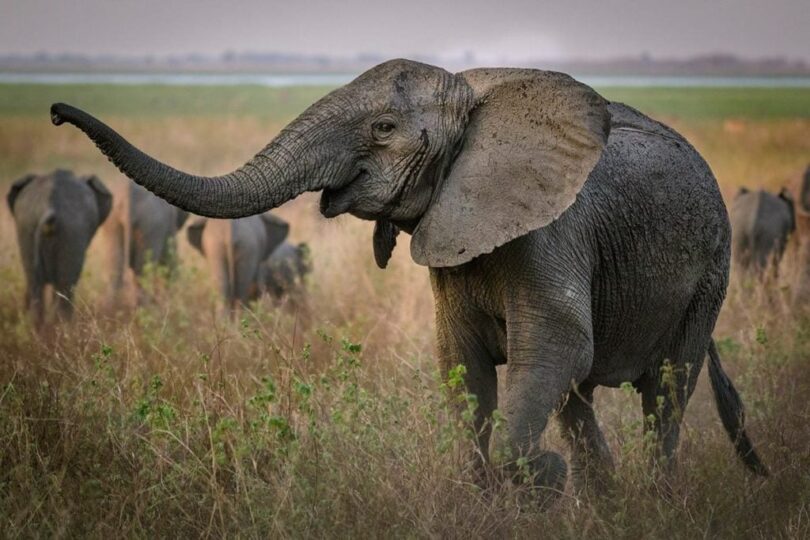“Tusklessness in elephants due to ivory poaching is evidence of “evolution” ?

Ivory loss in female African elephants is not a lab-verified example of morphological evolution (MDS) but is a function of Selection within heredity.
Gene.
AMELX or MEP1a Mutation.-311 This is found on the X chromosome with an X-linked locus (AMELX) and one autosomal locus (MEP1a). -311 Tusklessness is associated with at least one X-linked locus in a gene called “AMELX” plus one autosomal locus gene called the “MEP1a.” It is known that this AMELX MEP1a in African male elephants is lethal but appears to be essentially harmless in the female population. -313
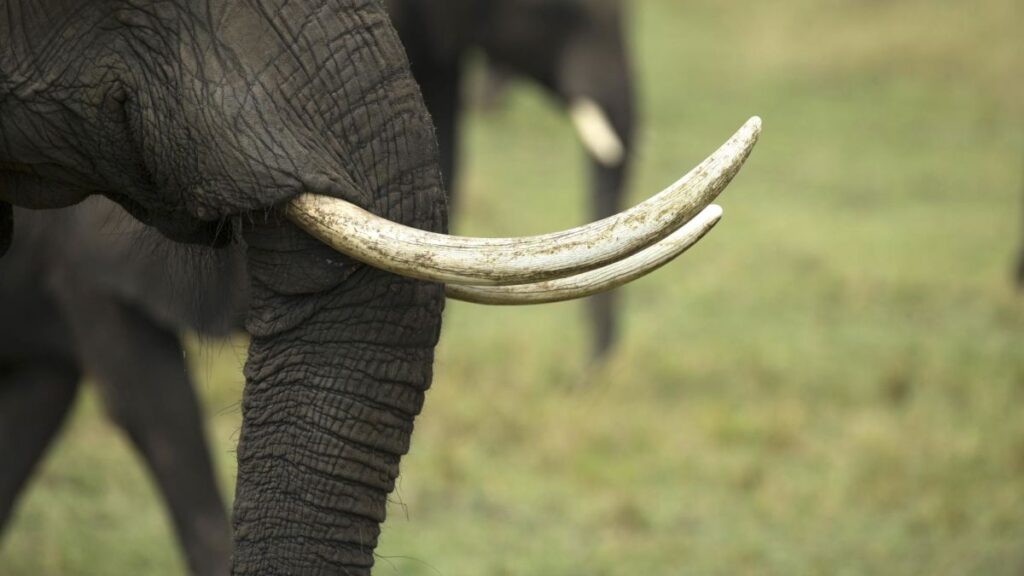
Emergence.
The tuskless trait has been estimated to have been in the genome of elephants for at least 1.6 million years based on an elephant fossil graveyard discovered in Florida that contained extinct relatives of modern-day elephants; some were tuskless. -314
The Paridigm & Narrative.
Tusklessness in elephants is proclaimed to be a prime example of evolution occurring in real-time right before our own eyes. Just do a Google search. According to one article by the Associated Press, “Elephants have evolved to be tuskless because of ivory poaching…” -316 National Geographic added: “Under poaching pressure, elephants are evolving to lose their tusks.” -312 Science Magazine published “Ivory Poaching and the Rapid Evolution of tusklessness in African Elephants.” -311 Countless similar articles on the internet herald “evolution” as the mechanism that has caused African elephants to become tuskless. It is believed that the extreme pressure of poaching ivory has caused a genetic mutation (of the gene “AMELX”), which provided the fitness benefit of tusklessness as “evolution.” -312 (All italics are mine).
Is this correct? If not, what mechanism has caused the growing rates of tusklessness in African elephants?
Facts.
Shockingly, it is estimated that 35,000 elephants are illegally killed each year due to poaching that aims at illegally selling ivory tusks. -315 U.S. Customs and Border Protection estimates that ivory collects up to $1,500 per pound. -318 Considering that two male tusks weigh over 250 pounds, the temptation to poach can become overwhelmingly enticing, especially for those caught struggling with survival in a war-stricken and impoverished country. -318 This human-based activity remains a direct threat to the elephant population worldwide. Rampant poaching in just fifteen short years of a civil war in Mozambique, Africa, from 1977 to 1992 lost 90% of the African elephant population to illegal poaching. -311
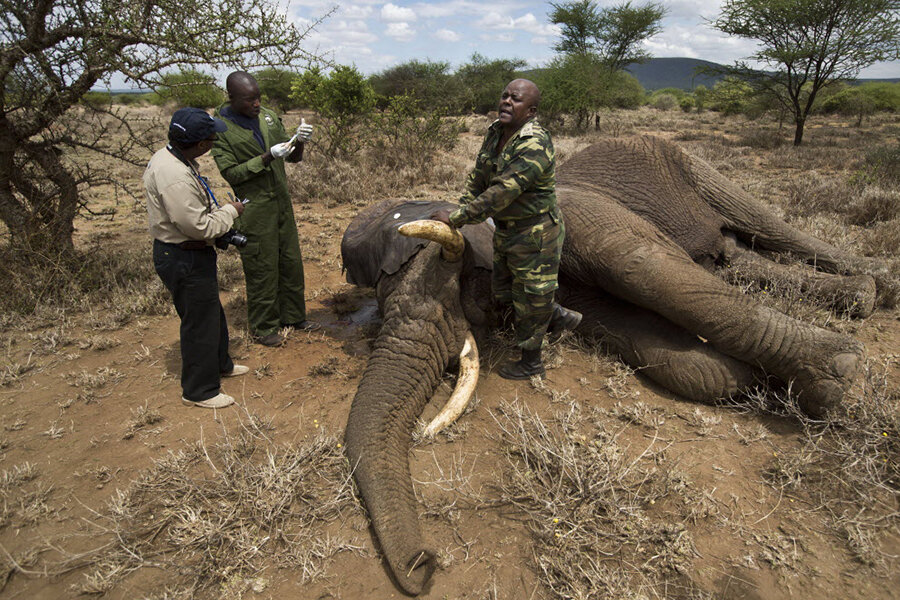
Tusks are essentially elongated molar teeth that grow throughout the elephant’s life. -313 Tusks are used for many purposes, including digging for food, clearing paths, and removing tree bark, and are vitally important for males for fighting purposes required for mating and self-defense. -313 Princeton’s researchers identified that the MEP1a gene produces dentin, the core mineral in ivory. -313 Tusks are made of ivory, which provides many advantages due to their intrinsic strength, stiffness, hardness, and tough durability.-313 Such durability combined with ivory’s stunning beauty is what has driven the illegal killing of elephants worldwide, especially the African elephant.
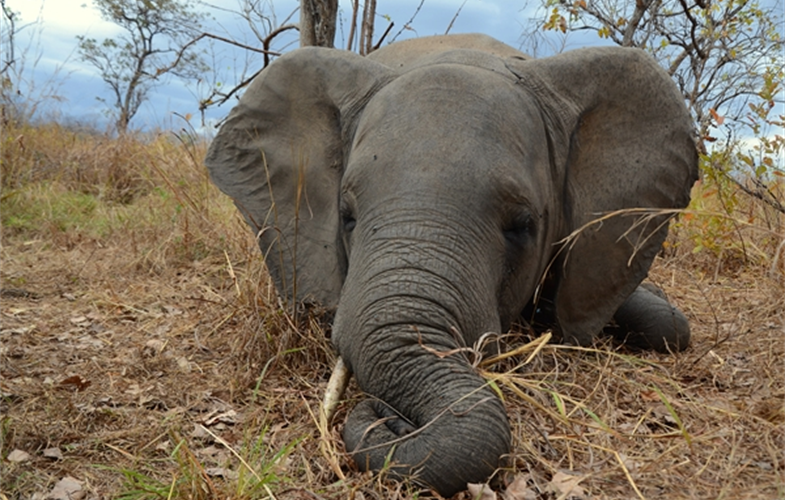
The oldest elephants in Mozambique, Africa, are in the Gorongosa National Park. Those individuals who survived poaching are thought to have “evolved” tusklessness. Let’s look at the evidence.
The Science.
The elephant populations before the Civil War were well documented. After the war had ended and research renewed, it was quickly apparent that tusklessness in female individuals had grown due to a 500% higher survival rate (from not being poached). -311 Data going back to the 1940s and up until the Civil War started, it is estimated that about 18.5% of the female population of African elephants were tuskless. -307 Data after the war had ended calculated that the tusklessness population had nearly doubled to about 33%. -307
It is undeniable that the selective killing of elephants due to poaching carried a cascade of adverse effects beyond tusklessness, negatively impacting the entire ecosystem and megafauna of the environment. -311 These effects were magnified because megaherbivores (like elephants) inhabit and affect much larger habitats and live much longer, which results in a much slower generational turnover. -311
Additionally, not all elephant species have high rates of tusk frequencies in females. -313 Elephants of the forest and savannah species (including the African elephant) tend to find female tusk phenotypes as a recessive trait in their populations. -313 Female Asian elephants only sport short protrusions of tusks called ‘tushes’.-313 Asian elephants of Sri Lanka, find only about 10% tusk phenotypes even among female and male individuals.-313
“…once there’s been heavy poaching pressure on a population, then the poachers start to focus on the older females as well…(therefore) with the older age population, you start to get this higher proportion of tuskless females.” -311
It is vitally important to distinguish something that many articles do not make immediately apparent: female African elephants can survive quite comfortably without tusks, but male elephants cannot. -313
For any male African elephant, being tuskless is a death sentence. The male could not fight for self-defense or to earn a mate. Geneticists discovered that the AMELX phenotype, when expressed to a male fetus, would result in certain premature. -313 The AMELX variant in male African elephants was highly deleterious and deadly. -311 Therefore, to say tusklessness in male African elephants is “rare” is misleading— it is nonexistent. -311
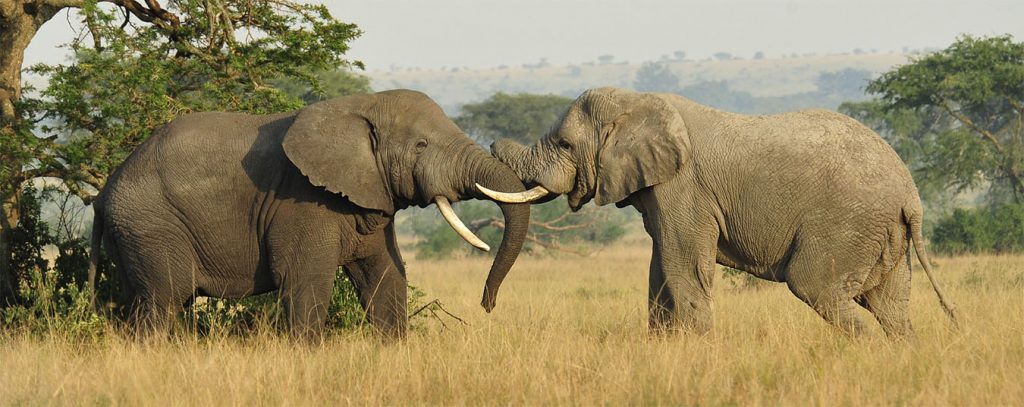
“No record of tuskless male elephants within Gorongosa National Park exists.” -311
National Geographic states failed to mention the deleterious effects of the AMELX phenotype by misleading the facts by writing, “Tusklessness does seem to occur disproportionately among females. It makes sense that tuskless males wouldn’t be able to compete for breeding access to female elephants…but we don’t see that. Tuskless males are scarce in African elephants.” -312
“Extremely rare”? How about nonexistent? -313 Studies indicate that no (zero) tuskless adult African elephant has been observed since the 1940s. -311 Male tusklessness in African elephants has never been observed over decades of documentation and studies. -313 Male African elephants simply cannot survive without tusks or with the AMELX trait. -313
“The park has never seen a tuskless male, suggesting the trait related to tusklessness is sex-linked.” -313
The oldest elephants wandering Mozambique’s Gorongosa National Park that survived the civil war have been genetically bottlenecked. About 90% of the entire population, mostly all males and tusked females were slaughtered in less than the span of one generation. -307 This resulted in only the survivors, namely those female individuals that carried the tusklessness phenotype, reproducing new offspring. -307
Side Effects.
Studies determined that the AMELX genetic trait was deleterious in African male elephants. -311AMELX (and MEP1a) have functional interactions within the mammalian tooth, including enamel, dentin, cementum, and periodontium. -311
“Whole-genome scans implicated two candidate genes with known roles in mammalian tooth development (AMELX and MEP1a), including enamel, dentin, cementum, and periodontium formation. One of these loci is associated with an X-linked (AMELX) dominant, male-lethal syndrome in humans that diminishes the growth of maxillary lateral incisors (homologous to elephant tusks).” -311
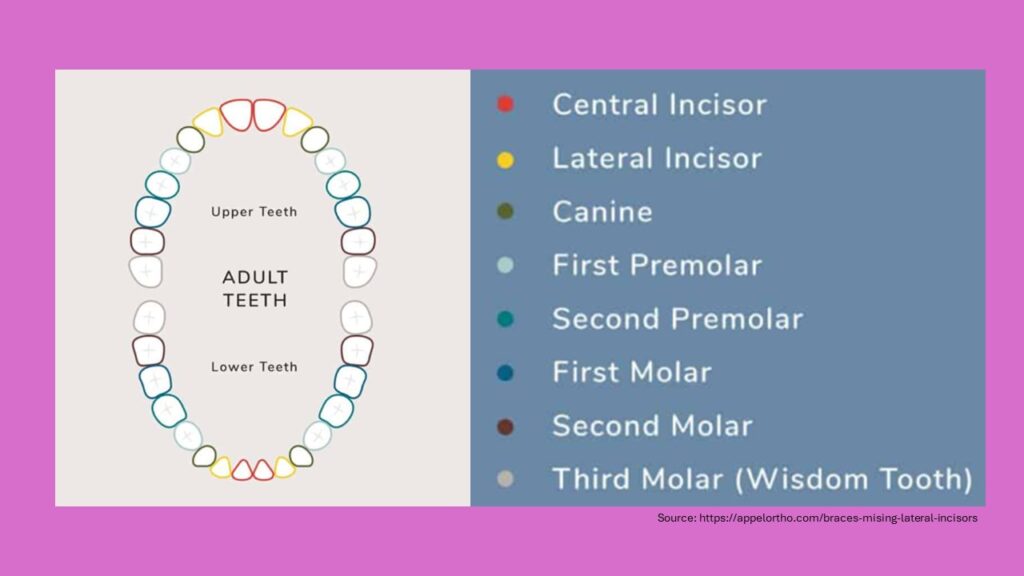
The maxillary lateral incisors are a pair of upper (maxillary) teeth that are located laterally (away from the midline of the face) from both maxillary central incisors of the mouth and medially (toward the midline of the face). The same AMELX-associated trait exists in human teeth, which, when expressed, results in a diminished growth of the maxillary lateral incisors. -311 Biologists at Princeton found that the AMELX gene produces enamel and cementum, which are minerals used to coat both tusks and teeth. -313 These are positionally the same teeth the African elephant uses for tusks.
The maxillary central incisors are the two teeth on either side of your front top teeth. In humans, about 20% of the population has various missing teeth, the most common being the lateral incisor teeth due to genetics. -307
“Mutations that delete the equivalent gene in humans can cause an inherited disorder where women lack ‘maxillary lateral incisors’, the teeth that become tusks in elephants.” -313
Summary.
The rapid expansion of tusklessness was derived from genetic bottlenecking caused by the selective pressures of 90% of the population being killed within less than one generation. This effect on any smaller and isolated population is devastating.
Wild-type gene sequences, as found in the present, are thought to have emerged long ago, although this claim is not lab-verified. The presupposition that these effects of tusklessness manifesting due to beneficial germline mutations cannot be substantiated by fossil genetic evidence that is both rare and fragmented. There are no “pre-wild-type” sequences to verify the claim population-wide. -310
Tusks are detrimental to male elephants’ survival first as providing self-defense and second to find a mate and reproduce. Tuskless male elephants face inevitable deaths and have never been observed as adults. The AMELX trait is “male-lethal,” but tusklessness does not cause a fitness loss in females. -311
“Poaching resulted in strong selection that favored tusklessness amid a rapid population decline. Survey data revealed tusk-inheritance patterns consistent with an X chromosome–linked dominant, male-lethal trait. -311
In consideration of all the variables, the sudden death of 90% of an already limited population, focused on only those with tusks, even considering the vastly short time of the civil war, the speed of the phenotypic expression was rapid due to genetic bottlenecking. -311 Therefore, the rapid expansion of the allele frequency in the newborn females rose because more carriers of the tuskless gene were alive to reproduce. This bottlenecking was provided by the extreme selection pressures of illegal killing that gave sudden death to females with tusks while allowing those without tusks to survive. -311
“Intensive poaching in Africa has been associated with an increase in the frequency of tuskless elephants, exclusively among females.” -311 Emphasis is mine.
As the articles mentioned at the beginning proclaimed, was it correct that a loss of tusks in female African elephants was evidence of MDS evolution? Did this phenotype shift occur by evolutionary mechanisms driven by beneficial missense mutations? No. This was due to heredity forces we call “Selection.”
Selection carried out by human beings slaughtering elephants for their ivory is undoubtedly an environmental pressure. It was a mass murder that killed 90% of their entire population in just fifteen years. Not only that, after the poachers killed all the males they could find, they only killed those females left that had tusks, thereby leaving the tuskless females alive to reproduce and spread their phenotypes.
The geneticists at Princeton echoed this sentiment writing: “Certainly humans are technically part of nature, but calling this process ‘natural selection’ is vague. The evolution of tuskless elephants is an example of ‘harvesting selection’ or ‘human-driven selection‘.” -313
How about the claim that tusklessness was an example of MDS evolution? According to the study at Princeton, it was not. They found that the phenotype was due to a recessive preexisting wild-type trait that existed long before the civil war began (millions of years before), that was expanded upon by allele frequencies derived by bottlenecking from the 10% surviving female population. -307
Geneticists remarked, “the trait probably isn’t caused by new mutations, but by rare genetic variants that are now more common in the gene pool.” -313 Emphasis is mine.
Therefore, female tusklessness was not due to a mutation but a wild-type allele frequency. Princeton biologists suspected that the tuskless trait was linked to the AMELX and confirmed that it was lethal if inherited on a male’s lone X chromosome, but because females had two X positions, they could be spared provided they inherited at least one wild-type copy of the gene. Genetic inheritance for the tuskless trait was consistent with the heredity hypothesis. -313
“They have this very compelling genomic data…(but) Scientists are still not sure which changes are causing a loss of tusks in either of the genes…(as) the best and only answer as to why there has been a measurable reduction in the number of female elephants born tusk-less…a bottleneck that strongly favors (the) tusk-less phenotype.” -309 Emphasis is mine.
While the genetic and developmental mechanisms leading to tusklessness and/or male nonviability remain unresolved, we know they preexisted in the population’s allele frequencies. -311
Subtype.
The AMELX trait is a phenotype expressed by heredity. It is not due to any lab-verified missense beneficial mutation as many articles seem to insinuate. The phenotype rapidly doubled due to genetic bottlenecking.
“Thus, we conclude that the population bottleneck in Gorongosa was accompanied by strong selection favoring the tuskless phenotype.” -311
Genes vary by phenotypes and traits expressed based on allele frequencies within a population. These allelic traits are passed to the offspring from their parents’ heredity. Although tusklessness was once relatively rare in African elephants, it’s become more common through bottlenecking by the slaughter of 90% of an already small population due to poaching. -309
306- Lopalco L. CCR5: From Natural Resistance to a New Anti-HIV Strategy. Viruses. 2010 Feb;2(2):574-600. doi: 10.3390/v2020574. Epub 2010 Feb 5. PMID: 21994649; PMCID: PMC3185609. https://www.ncbi.nlm.nih.gov/pmc/articles/PMC3185609/
307- https://africa.si.edu/collection/conservation/protect-ivory/
308- http://2-https://www.smithsonianmag.com/smart-news/female-elephants-are-evolving-to-go-tuskless-but-may-be-killing-males-180978938/
310- From the vault: Can we really extract ancient DNA from dinosaurs?.
311- Ivory poaching and the rapid evolution of tusklessness in African elephants, SHANE C. CAMPBELL-STATON, BRIAN J. ARNOLD, DOMINIQUE GONÇALVES, PETTER GRANLI, JOYCE POOLE, RYAN A. LONG, AND ROBERT M. PRINGLE; SCIENCE, Oct, 2021; Vol 374, Issue 6566 pp. 483-487 DOI: 10.1126/science.abe7389; https://www.science.org/doi/10.1126/science.abe7389
312- National Geographic, Under poaching pressure, elephants are evolving to lose their tusks” ByDina Fine Maron, Nov, 2018; https://www.nationalgeographic.com/animals/article/wildlife-watch-news-tuskless-elephants-behavior-change
313- BBC Science Focus, “More and more elephants are being born without tusks. A geneticist explains why.” JV Chamary, Nov, 2021; https://www.sciencefocus.com/news/has-ivory-poaching-triggered-the-evolution-of-tuskless-elephants
314- Graveyard of Extinct Elephants From 5 Million Years Ago Found in Florida; Published May 26, 2023 at 10:56 AM EDT https://www.newsweek.com/graveyard-extinct-elephants-discovered-florida-1802915#:~:text=Graveyard%20of%20Extinct%20Elephants%20From%205%20Million%20Years%20Ago%20Found%20in%20Florida,-Published%20May%2026&text=Paleontologists%20from%20the%20Florida%20Museum,to%205%20million%20years%20ago.
316- Elephants have evolved to be tuskless because of ivory poaching, a study finds; Oct, 2018 The Associated Press; https://www.npr.org/2021/10/22/1048336907/elephants-tuskless-ivory-poaching-africa#:~:text=with%20other%20elephants.-,But%20during%20episodes%20of%20intense%20ivory%20poaching%2C%20those%20big%20incisors,that%20will%20never%20develop%20tusks.
317- Missing Lateral Incisors? Help Your Smile With Braces! By Appel Orthodontics, Mar, 2022 Orthodontic Technology & Treatment Options; https://appelortho.com/braces-mising-lateral-incisors
318- U.S. Customs and Border Protection; https://www.cbp.gov/frontline/fighting-ivory-trade#:~:text=Staggering%20black%20market%20prices%20in,wealth%2C%20poachers%20can%20be%20ruthless.

